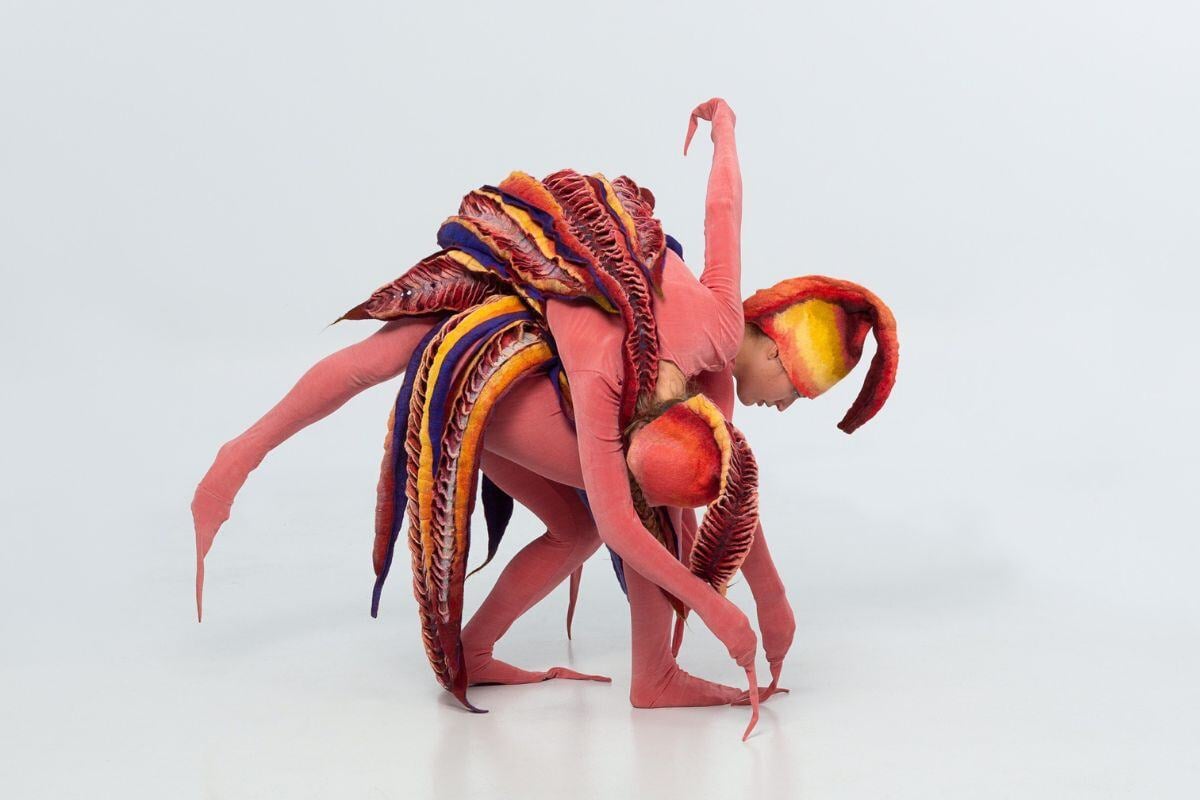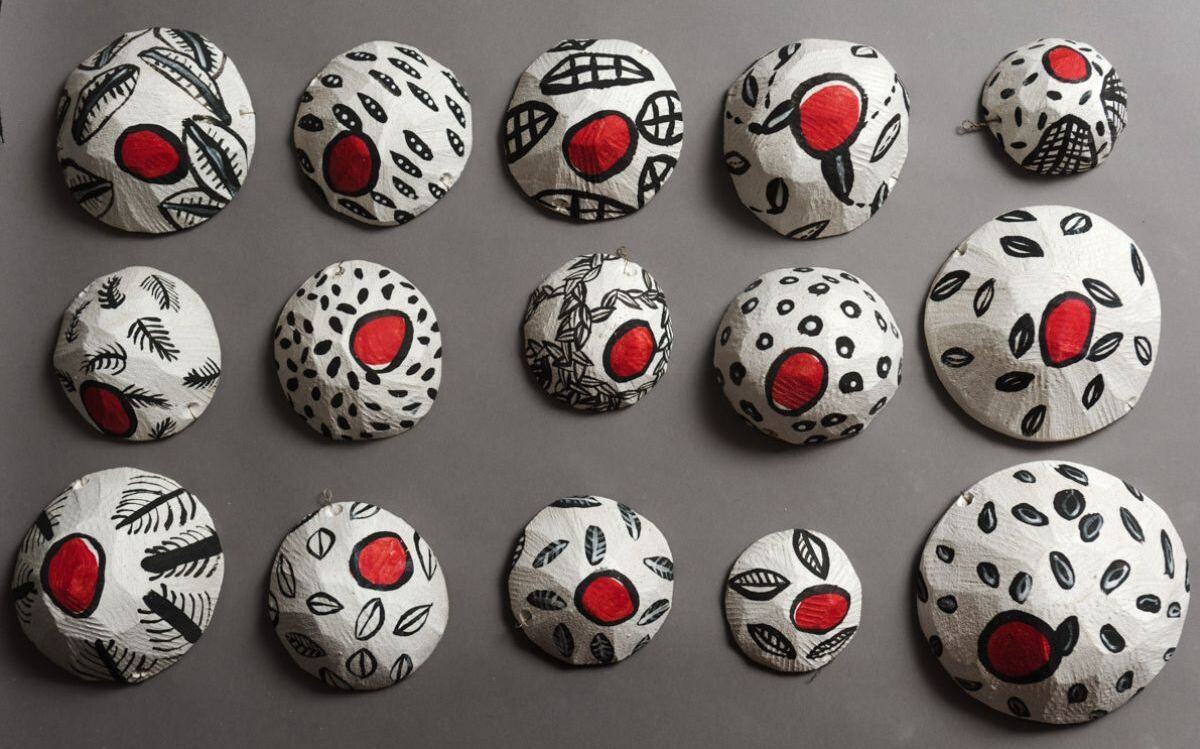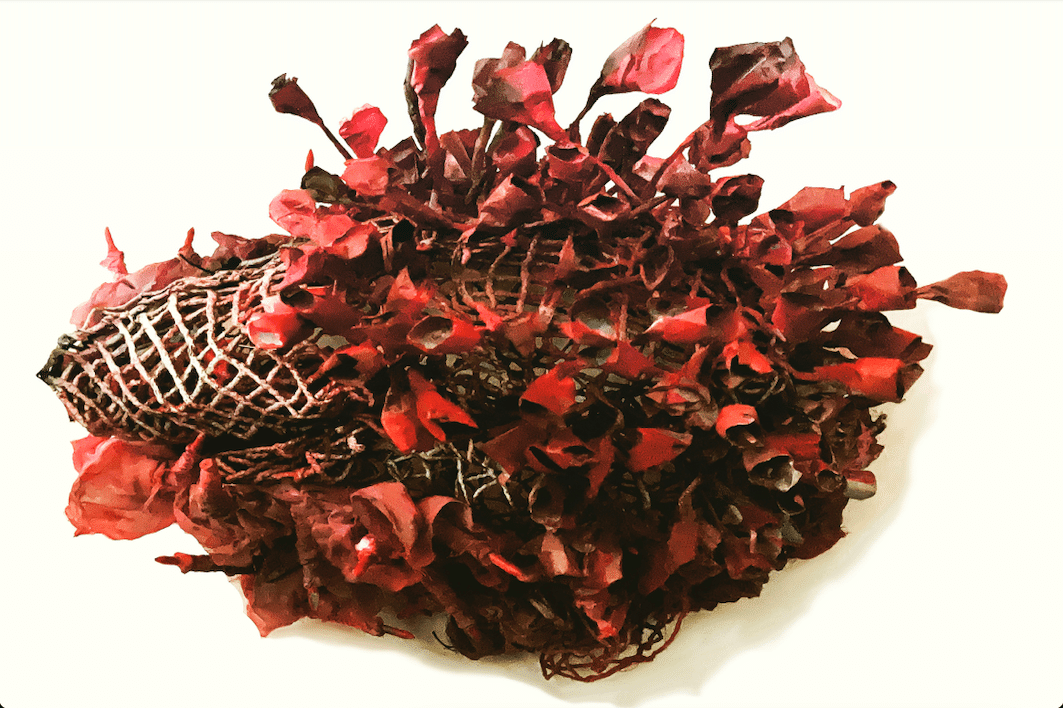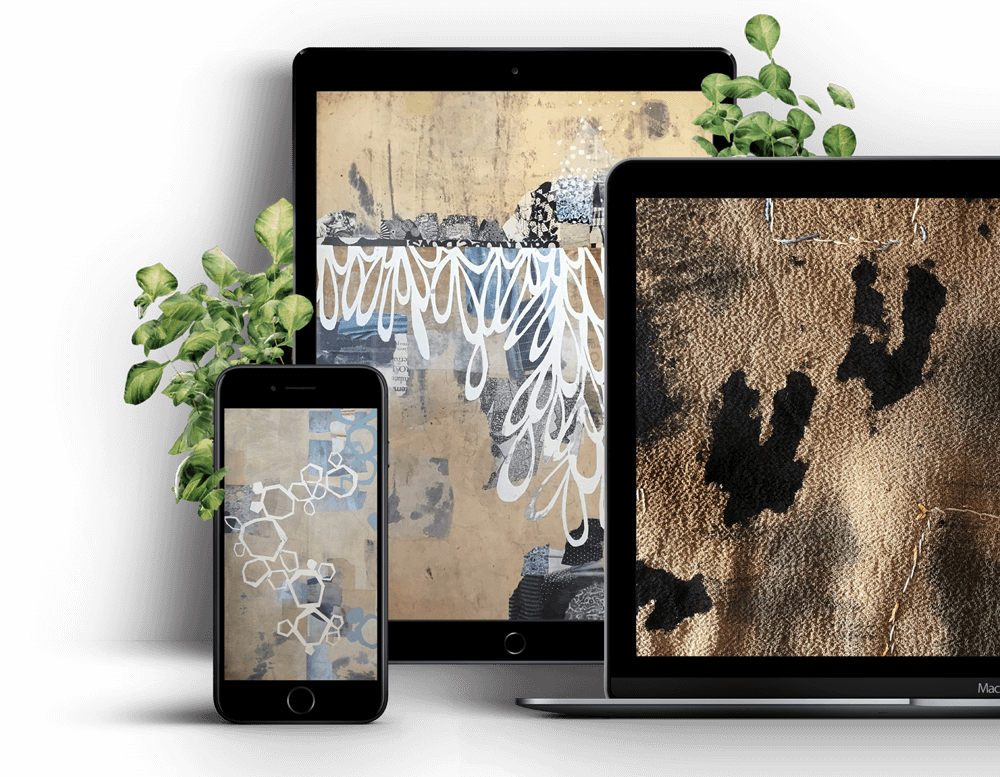Lizel von Wielligh: Full of Fluff and String
Lizel von Wielligh's Friday Feature Artist Interview can be found at the bottom of this page.
For South African artist Lizel von Wielligh, textile projects serve as a canvas for emotional depth, mirroring her experiences and the vibrant community she gathers around herself. We caught up with Lizel to explore her work and philosophies, and learn more about her work and inspirations.
Fluff and String
Artistry and creation have always been part of Lizel’s life, “I always say if you cut my head open at the top, it's just fluff inside and string,” she says. “I've always created since I can remember when I was a little girl. I grew up very rurally, with very traditional crafty things. Even in primary school, I was part of the sewing club, learning to make French knots and all those kinds of things. I got my first pair of school shoes, I think, when I went to high school.”
Lizel was always motivated to push further, starting with her upbringing, “I'm a highly stimulated schoolteacher’s child. We always got educational toys and puzzles. I had to make my own toys rather than getting the toys.”

Dolls and Puppets
Before settling on her current style and mediums, Lizel experimented with a lot of art forms, including dolls and puppetry. ”It started with doll making,” she says, “Or maybe making paper dolls. You draw the dresses, and then you cut them out and then you put them on your model doll and then you stick bits of fabric to it. Puppetry I came to in high school. I went to art school in Pretoria, and there wasn't really a subject like puppetry, it was sculpture, so I was thrown in with the sculpture kids. And sometimes they gave some quite profound topics of form and line. I had to incorporate this with toilet paper and tampons! So that started as a teenager.”
Discovering Textiles
Lizel first started work in a chicken factory before finding her way to textiles, “I actually wanted to go and work on a kibbutz, but my grandmother refused, so I got work in Norfolk,” she explains. “And then it was a weird route to textiles really. I tried little odd jobs and things, always had my sewing kit, always had my drawing things with me and always collected. Charity shops were a great thing for me in the UK. I got into a nursing course, but you can't really get too creative in nursing, I always say, because you might end up killing somebody. I had all that creative energy, so I joined an evening class in textile techniques at Skelmersdale College. These ladies all had purple hair. I kind of see them a bit like the crones in Macbeth, all huddling around.
It was just so amazing as I never really looked at fibre in this way. And then (the teacher) started talking about what happens if you take this apart and you twist it, or you set it on fire, or you mix it with glue, and I think that started it all and I never stopped.”

The Karoo and Creating From Memory
Lizel found inspiration in a desert region of South Africa called The Karoo. “I think when I got to the Karoo,” Lizel says, “it was a very difficult time of my life. And it was exactly the right thing at the right time. This place bowled me over. I'm still in love. I still have butterflies in my tummy. I get so excited because you can step 20 steps left, and it will be completely different from 20 steps to your right. And with the little succulents there, it's like an undersea garden, and I remain fascinated. I think the healing came in the quietness and being able to then just sit and reflect. Nothing is as freaky as nature. You don't really need much. Taking little walks, just looking. It reminded me again about visual memory because we often get taught to draw from life or draw from a photo, but you should go away and try to think what you can remember and then put it down, and you'll be quite surprised.”
This connection to nature is vitally important for Lizel, “I think you're born with certain concepts and certain things you've just always been attracted to. And you can't even remember why. So when you're very small, it might be a smell, that might be something that makes you feel safe. Having had the luxury or the privilege to grow up in a rural setting is so important. And I never forget this because I've lived in cities and I would find this very stressful and very stifling. But even in cities, you see nature and I like to notice those kinds of things as well. Nature always creeps in.”
Lizel's Dream
Lizel has a dream to cover the Voortrekker Monument in South Africa, “That's a dream I've got, and it's gonna be a tough one to live up to,” she says, “but I'm throwing this out to the universe. So, ladies out there, my big dream is to cover the Voortrekker Monument. If you know South Africa's old monuments, it's an amazing building. In South Africa, things get quite political, so we're gonna have to look at a good spiel. But I'd love to make a Dutch Delft, and denim toasted teak cosy for this. If we cover this monument, we may be focusing attention on this and heritage and maybe working together, all the women and men. There are so many guys sewing as well, just getting together with the fibre stuff would be pretty amazing. And that scale and that size. That would be quite out of my comfort zone.”

About Lizel von Wielligh
Lizel von Wielligh’s stitching sanctuary is a transformative space where nature's wonders evolve into intricate fabric constructions. The beauty lies in the refreshing simplicity of her methods, and the abundant repetition of nature provides a theme reflected in her work.
Trusting in her visual memory and the objects around her, Lizel utilises refreshingly simple sewing, painting and sculpting techniques. What sets her apart is her wholehearted embrace of recycling materials, a conscious choice in response to the substantial fabric waste in both households and the fashion industry.
In a world that often clamours for more, Lizel focuses on and gives thanks for the blessings she receives. Rather than focusing on what has been taken away or what is lacking, Lizel says if she has a cup of five roses, tea and a few flowers in a jam jar, she is the luckiest and richest girl in the world.
Beginning with the humble sketch, her work gradually unfolds layer by layer, transforming into expensive three-dimensional textile sculptures on a grand scale. Her narrative extends beyond stitches and fabric as she weaves a sense of community into her work, embracing collaboration and ensuring her creations are collective.
Notifications
Join Our Newsletter
OUR YOUTUBE CHANNEL
View our interviews and more on our Youtube channel!
OUR FACEBOOK GROUP
Join our Community and stay updated with our upcoming announcements!




